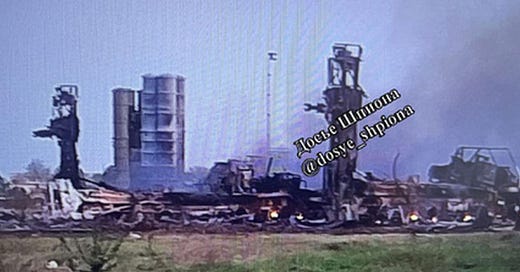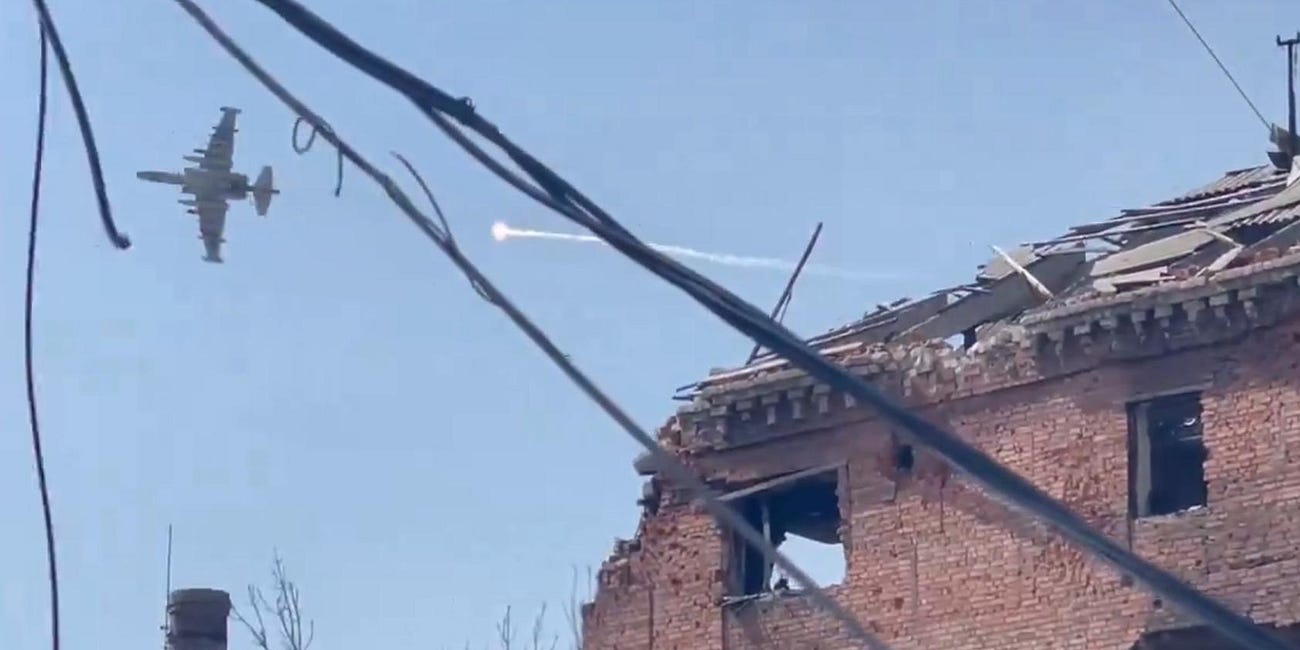Ukrainian Missiles and Drones Are Dismantling Russian Air-Defenses—And Making Subsequent Raids Even Easier
A burning S-400 battery in occupied Crimea is evidence of an escalating strategic campaign
Prior to its wider war on Ukraine, Russia deployed five batteries of its best S-400 surface-to-air missiles, plus their radars and command posts, to occupied Crimea.
In the 26 months since the Russians attacked, Ukrainian forces have struck at least three of those batteries in Crimea and adjacent southern oblasts. The most recent strike, overnight on Tuesday, destroyed four—possibly five—5P85 launchers for the S-400’s 40N6E missile, each ranging as far as 250 miles.
Imagery from the aftermath of the attack on Dzhankoi air base, 100 miles from the front line in occupied Crimea, confirms the destruction of what amounts to most of an entire S-400 battery. It’s unclear whether the battery’s radar and command post suffered any damage.
Exactly how the Ukrainians struck the S-400 is a matter of speculation. Why is obvious, however. Blowing up an S-400 makes subsequent raids easier.
Previous hits on S-400s reportedly involved Ukrainian navy batteries firing locally-made Neptune cruise missiles. There’s speculation the Tuesday raid involved an American-supplied M39 rockets, also known as “Army Tactical Missile Systems,” or ATACMS.
The M39 is a two-ton, 13-foot ballistic missile with a solid rocket motor. Fired by a tracked or wheeled launcher, the 1990s-vintage missile ranges as far as 100 miles under inertial guidance.
As the missile plummets toward its target, it spins and pops open, scattering nearly a thousand submunitions across an area of potentially tens of thousands of square feet. Each bomblet has the explosive power of a hand grenade.
An M39 usually should strike within 50 yards or so of its aim-point. This isn’t super-accurate by modern standards, but it’s accurate enough.
The United States has given Ukraine dozens of M39s in two batches. It should come as no surprise that the Ukrainians have aimed the rockets at area targets populated with soft targets: air bases, in particular. Beside hosting an S-400, the Dzhankoi base also is home to a helicopter regiment and a large vehicle depot.
Everything at Dzhankoi is vulnerable to a barrage of M39s. But the S-400 might be the most valuable target, even though the design clearly isn’t capable of reliably intercepting incoming Ukrainian munitions.
The Ukrainian military and intelligence directorate steadily are targeting Russian air-defenses—air- and ground-based radars and fixed and mobile missile-launchers—in order to make it easier for Ukraine’s cruise missiles, rockets, long-range strike drones and glide-bombing fighter-bombers to strike air bases, command posts, logistical nodes and industrial sites not only in occupied Ukraine, but hundreds of miles inside Russia, as well.
These deep strikes gradually erode Russia’s air power, command and control and industrial output. They don’t prevent Russian regiments that already are on the front line from advancing against ammunition-starved Ukrainian brigades. The deep strikes are strategic, not tactical. It will take time for the second-order effects of the strikes to shape the front line.
Time, unfortunately, isn’t something the Ukrainians have in abundance as they feel the inevitable effects of a successful effort by Russia-aligned Republicans in the U.S. Congress to delay further U.S. aid to Ukraine. That effort finally is collapsing as Republican Speaker of the House Mike Johnson caves to overwhelming pressure to bring aid to a vote.
That vote should happen on Saturday, freeing up tens of billions of dollars that U.S. president Joe Biden can spend on weapons for Ukraine. The bill Congress will vote on specifically requires Biden to send more ATACMs to Ukraine—which he likely would have done, anyway.
So expect more Ukrainian deep strikes—and soon. And patiently wait for Russian regiments to feel the shortages and disruptions that these strikes slowly are inflicting on the Russian army of occupation.
Read more:
Their Pilots Unafraid of Depleted Ukrainian Air-Defenses, Russian Air Force Sukhoi Su-25s Are Flying Close Air Support Around Chasiv Yar
The Ukrainian garrison in Chasiv Yar has run low on, or even out of, air-defense missiles. Sensing weakness, the Russian air force has surged glide-bombers and attack jets toward the embattled town in eastern Ukraine’s Donetsk Oblast. The Russians’ goal: to blast a gap in Ukrainian lines around Chas…






